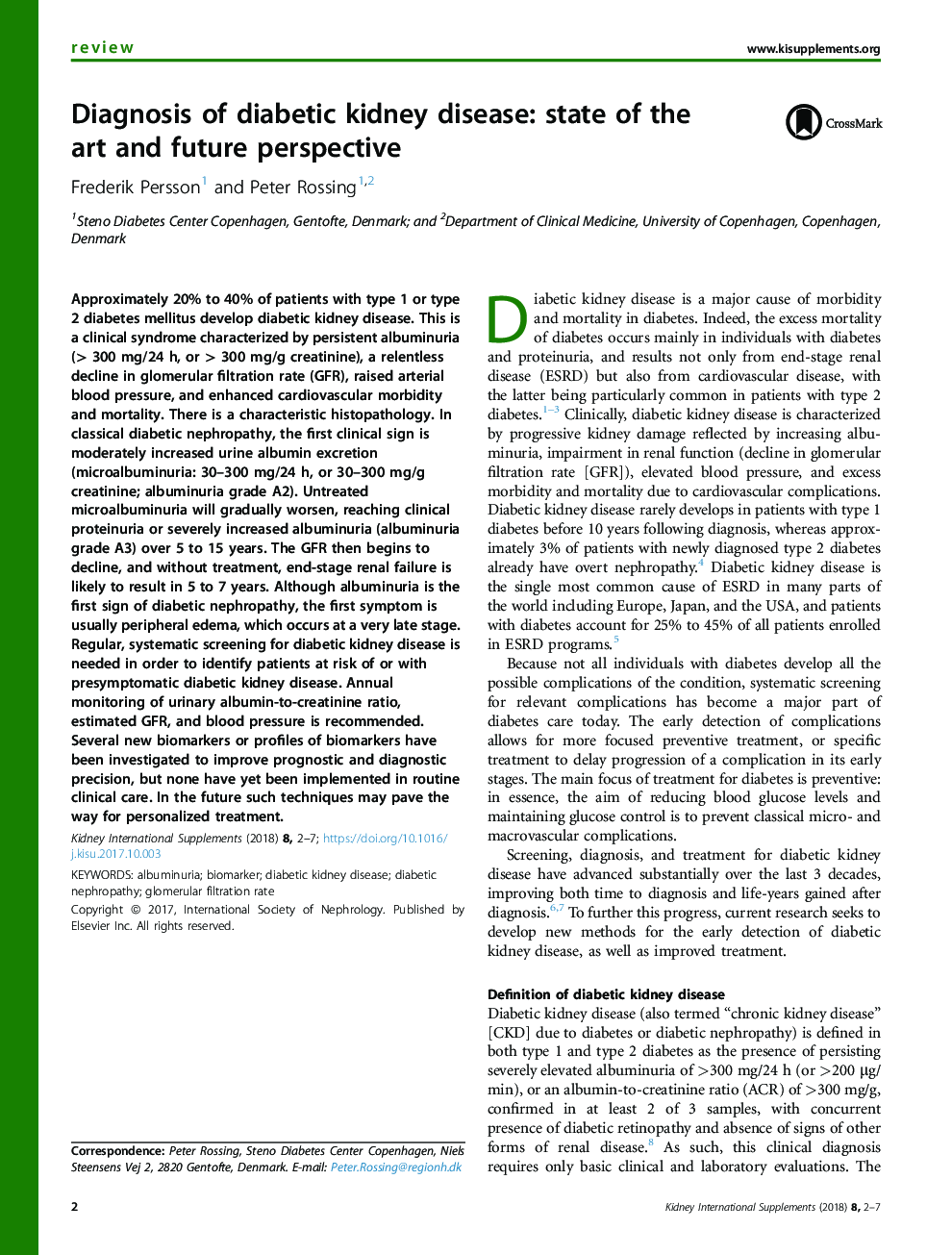| Article ID | Journal | Published Year | Pages | File Type |
|---|---|---|---|---|
| 8773947 | Kidney International Supplements | 2018 | 6 Pages |
Abstract
Approximately 20% to 40% of patients with type 1 or type 2 diabetes mellitus develop diabetic kidney disease. This is a clinical syndrome characterized by persistent albuminuria (> 300 mg/24 h, or > 300 mg/g creatinine), a relentless decline in glomerular filtration rate (GFR), raised arterial blood pressure, and enhanced cardiovascular morbidity and mortality. There is a characteristic histopathology. In classical diabetic nephropathy, the first clinical sign is moderately increased urine albumin excretion (microalbuminuria: 30-300 mg/24 h, or 30-300 mg/g creatinine; albuminuria grade A2). Untreated microalbuminuria will gradually worsen, reaching clinical proteinuria or severely increased albuminuria (albuminuria grade A3) over 5 to 15 years. The GFR then begins to decline, and without treatment, end-stage renal failure is likely to result in 5 to 7 years. Although albuminuria is the first sign of diabetic nephropathy, the first symptom is usually peripheral edema, which occurs at a very late stage. Regular, systematic screening for diabetic kidney disease is needed in order to identify patients at risk of or with presymptomatic diabetic kidney disease. Annual monitoring of urinary albumin-to-creatinine ratio, estimated GFR, and blood pressure is recommended. Several new biomarkers or profiles of biomarkers have been investigated to improve prognostic and diagnostic precision, but none have yet been implemented in routine clinical care. In the future such techniques may pave the way for personalized treatment.
Related Topics
Health Sciences
Medicine and Dentistry
Nephrology
Authors
Frederik Persson, Peter Rossing,
